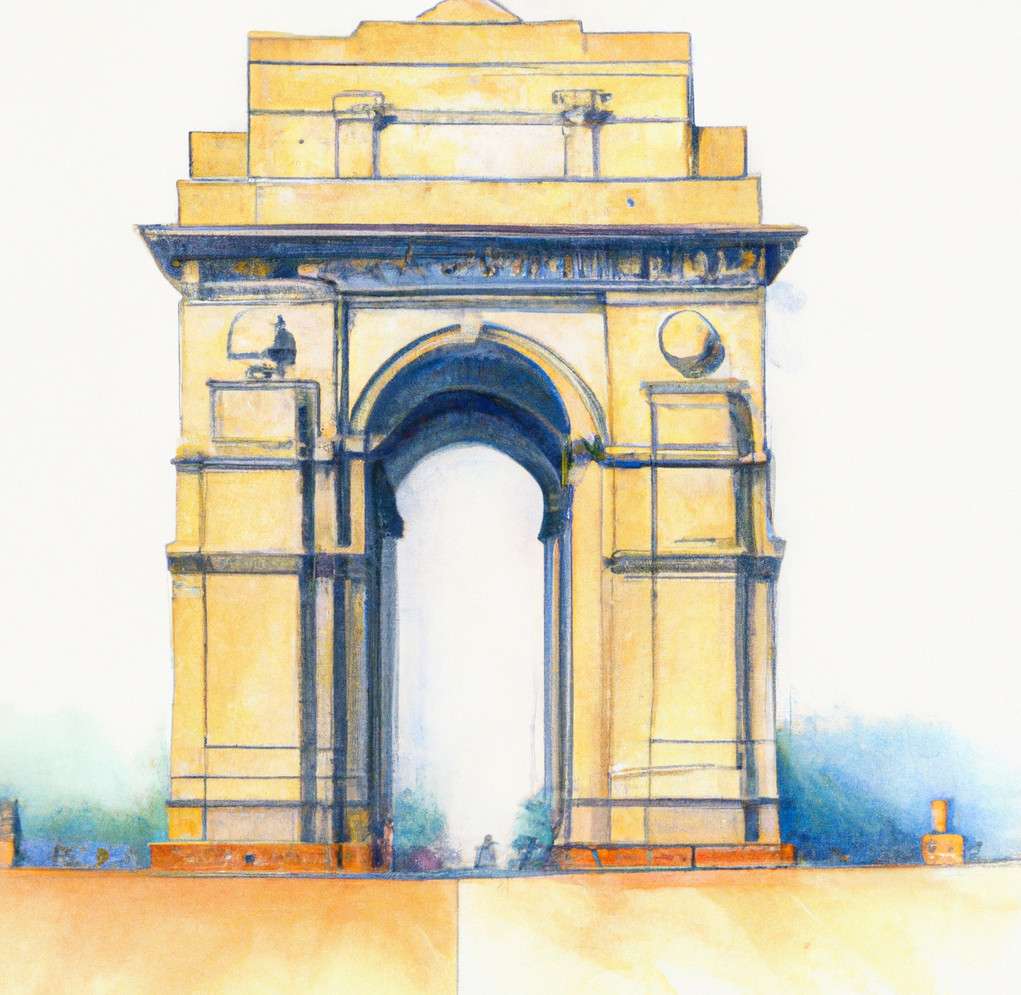The weather in India in August is highly diverse and influenced by various factors such as its geographical location, monsoon season, and the presence of mountain ranges and coastlines. Understanding the patterns of weather in India in August, is crucial for planning a trip to the country. This blog post aims to provide a comprehensive overview of India’s climate, weather patterns in August, regional variations, popular tourist destinations, precautions and tips for traveling, and the importance of considering weather conditions while planning a visit to India.
Introduction
Weather refers to the atmospheric conditions prevailing in a specific area at a given time. It plays a significant role in our daily lives, influencing activities and decisions, such as clothing choices, outdoor plans, and agricultural practices. Understanding weather patterns is crucial for preparedness and safety.
In the context of India, weather holds immense importance due to the country’s diverse landscapes, cultural significance, and heavy reliance on agriculture. Being aware of the weather conditions and patterns in India can help travelers make informed decisions regarding their itinerary, clothing, and activities.
The purpose of this blog post is to provide a detailed and comprehensive guide to the weather in India in August. By exploring the climate, weather patterns, regional variations, popular tourist destinations, and precautions for traveling, readers will gain valuable insights for planning a visit to India during this month.
Overview of India’s Climate
India’s geographical location
India is located in South Asia, bordered by the Indian Ocean on the south, the Arabian Sea on the southwest, and the Bay of Bengal on the southeast. It has diverse topography, including the Himalayan mountain range in the north, the Thar Desert in the northwest, and coastal plains in the south.
Influence of monsoon on the country’s climate
The monsoon season, which occurs from June to September, has a significant impact on India’s climate. The southwest monsoon brings heavy rainfall to most parts of the country, replenishing water resources, and supporting agricultural activities.
Classification of India’s climate zones
India can be broadly classified into five climatic zones: tropical rainy, tropical wet-dry, subtropical humid, montane, and semiarid. Each zone has distinct weather characteristics and influences tourism, agriculture, and daily life.
Patters of Weather in India in August
Overview of the monsoon season in India
August falls during the peak of the monsoon season in India. The country experiences widespread rainfall, with varying intensity across different regions. Monsoon winds bring moisture from the Arabian Sea and the Bay of Bengal, resulting in heavy downpours.
Rainfall patterns
- Average rainfall in different regions:
In August, regions like the Western Ghats, Northeast India, and the Himalayan foothills receive the highest amount of rainfall, often exceeding 200mm. Coastal areas and central India also experience significant rainfall, while some parts of northwest India receive relatively less rainfall. - Impact of monsoon on agriculture and water resources:
The monsoon rainfall is essential for agricultural activities in India, as it provides water for irrigation and supports the growth of crops. However, excessive rainfall can lead to flooding, causing damage to crops and infrastructure. Proper water management becomes crucial during this period.
Temperature variations
- Average maximum and minimum temperatures in different regions:
In August, the temperature varies across India, with northern and central regions experiencing relatively higher temperatures compared to southern and coastal areas. The average maximum temperature ranges between 30°C to 35°C in most parts, while the minimum temperature hovers around 25°C to 28°C. - Factors influencing temperature variations:
The temperature variations can be attributed to factors such as latitude, elevation, proximity to water bodies, and the presence of mountains. Coastal areas and hill stations tend to have cooler temperatures due to sea breezes and higher altitudes, respectively.
Humidity levels
- Impact of monsoon on humidity:
The monsoon season brings high humidity levels to most parts of India in August. The moisture-laden winds contribute to the muggy and sticky weather conditions. Humidity levels can range from 70% to 90% in many regions. - Effects of high humidity on daily life:
High humidity can make it uncomfortable for outdoor activities and may lead to feelings of lethargy and discomfort. It is essential to stay hydrated and wear breathable clothing to cope with the humidity during this time.
Weather in India in August Regional Variations
Northern India
1. Weather conditions in major cities (Delhi, Jaipur, Lucknow):
In August, northern India experiences hot and humid weather conditions. Delhi, the capital city, witnesses high temperatures, with the average maximum temperature around 34°C. Jaipur and Lucknow also have similar weather patterns, with temperatures ranging between 32°C to 35°C.
2. Impact of Himalayan ranges on weather patterns:
The Himalayan ranges in northern India have a significant influence on the weather. They act as a barrier to the monsoon winds, resulting in relatively less rainfall in the regions located in their rain shadow. Hill stations nestled in the Himalayas offer cooler temperatures and pleasant weather during August.
Western India
1. Weather conditions in major cities (Mumbai, Ahmedabad, Pune):
Western India experiences a mix of coastal and inland weather patterns. Mumbai, located on the western coast, experiences moderate rainfall and temperatures ranging from 28°C to 32°C. Ahmedabad and Pune, located inland, have similar temperature ranges but receive relatively less rainfall.
2. Influence of the Arabian Sea on weather:
The proximity to the Arabian Sea plays a role in the weather conditions of western India. Sea breezes and the moisture-laden winds contribute to the moderate rainfall and relatively cooler temperatures along the coast.
Southern India
1. Weather conditions in major cities (Chennai, Bangalore, Kochi):
August brings moderate to heavy rainfall in southern India. Chennai experiences a mix of hot and humid weather, with temperatures ranging from 32°C to 34°C. Bangalore and Kochi have milder temperatures, ranging from 28°C to 32°C, along with significant rainfall.
2. Impact of the Western Ghats on weather patterns:
The Western Ghats mountain range plays a crucial role in the weather patterns of southern India. It acts as a barrier to the monsoon winds, resulting in heavy rainfall in the windward side, along the coast and the foothills, while the leeward side experiences relatively less rainfall.
Eastern India
1. Weather conditions in major cities (Kolkata, Bhubaneswar, Guwahati):
Eastern India experiences heavy rainfall in August, influenced by the Bay of Bengal. Kolkata, Bhubaneswar, and Guwahati have temperatures ranging from 30°C to 34°C and receive significant rainfall during this month.
2. Influence of the Bay of Bengal on weather:
The Bay of Bengal, located on the east coast of India, contributes to the heavy rainfall experienced in eastern India. The moisture-laden winds from the bay bring substantial precipitation to the region.
Popular Tourist Destinations in August
Hill stations
1. Weather conditions in popular hill stations (Shimla, Darjeeling, Ooty):
August is an ideal time to visit hill stations in India to escape the heat and enjoy pleasant weather. Hill stations like Shimla, Darjeeling, and Ooty experience mild temperatures, ranging from 15°C to 25°C, and moderate rainfall, making them popular tourist destinations during this month.
2. Activities and attractions during August:
Visitors to hill stations in August can indulge in activities such as trekking, nature walks, and exploring tea gardens. These destinations offer breathtaking views of lush green landscapes and provide opportunities for relaxation and rejuvenation.
Coastal areas
1. Weather conditions in popular coastal destinations (Goa, Kerala, Andaman Islands):
Coastal areas in India experience moderate to heavy rainfall in August. Goa, Kerala, and the Andaman Islands have temperatures ranging from 25°C to 28°C, along with significant rainfall. However, the rain showers do not deter travelers from enjoying the beautiful beaches and water activities.
2. Water-based activities and attractions during August:
In coastal destinations, visitors can engage in water-based activities such as surfing, snorkeling, and boat rides. The monsoon season adds a unique charm to these places, with lush greenery and fewer crowds.
Cultural and historical sites
1. Weather conditions in popular cities with cultural significance (Agra, Varanasi, Udaipur):
Cities with cultural and historical significance offer a glimpse into India’s rich heritage. In August, Agra, Varanasi, and Udaipur experience temperatures ranging from 30°C to 35°C, along with moderate rainfall. Despite the weather, these cities attract tourists with their architectural marvels and spiritual significance.
2. Festivals and events during August:
Various festivals and events take place in cultural cities during August. For example, in Varanasi, the festival of Raksha Bandhan is celebrated with great enthusiasm. Udaipur hosts the Teej festival, dedicated to the goddess Parvati. Visitors can witness these vibrant celebrations and immerse themselves in the cultural heritage of India.
Precautions and Tips for Traveling in August
Health and safety considerations:
1. Mosquito-borne diseases and prevention:
August is a season when mosquito-borne diseases like dengue and malaria are prevalent in India. Travelers should take precautions such as using mosquito repellents, wearing long sleeves and pants, and staying in accommodations with proper mosquito protection.
2. Monsoon-related hazards and precautions:
During the monsoon season, hazards like landslides and flooding can occur in some regions. Travelers should stay updated on weather forecasts, avoid risky areas, and follow the instructions of local authorities to ensure their safety.
Packing essentials for August travel:
1. Clothing recommendations:
It is advisable to pack lightweight and breathable clothing that can dry quickly. Carry rainproof jackets or umbrellas to stay protected during sudden showers. Additionally, pack a mix of summer and winter clothing, as temperatures can vary across regions.
2. Essential items for rainy days:
Include items such as waterproof shoes, quick-drying towels, and waterproof bags to protect electronics and documents. It is also advisable to carry a first aid kit and necessary medications.
Planning for indoor activities during heavy rainfall
1. Museums, art galleries, and cultural centers:
During heavy rainfall, explore indoor attractions such as museums, art galleries, and cultural centers. These places offer insights into India’s history, art, and culture, providing an enriching experience.
2. Local cuisine and food exploration:
Indulge in the diverse and flavorful cuisine of India during rainy days. Try local delicacies, visit food markets, or participate in cooking classes to learn about the regional culinary traditions.
Conclusion
In August, India experiences the monsoon season, characterized by widespread rainfall, high humidity levels, and varying temperatures across different regions. The northern and central parts of the country tend to be hotter, while coastal areas and hill stations offer milder temperatures.
Understanding the weather in India in August, is crucial for travelers to make informed decisions about their itinerary, clothing, and activities. Being aware of regional variations and popular tourist destinations can help optimize the travel experience and ensure a safe and enjoyable trip.
Despite the monsoon season, India has a lot to offer to travelers in August. From picturesque hill stations to vibrant cultural cities and beautiful coastal areas, visitors can immerse themselves in the rich heritage, natural beauty, and culinary delights of the country.

